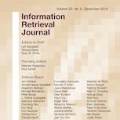Recent object detection models for infrared (IR) imagery are based upon deep neural networks (DNNs) and require large amounts of labeled training imagery. However, publicly-available datasets that can be used for such training are limited in their size and diversity. To address this problem, we explore cross-modal style transfer (CMST) to leverage large and diverse color imagery datasets so that they can be used to train DNN-based IR image based object detectors. We evaluate six contemporary stylization methods on four publicly-available IR datasets - the first comparison of its kind - and find that CMST is highly effective for DNN-based detectors. Surprisingly, we find that existing data-driven methods are outperformed by a simple grayscale stylization (an average of the color channels). Our analysis reveals that existing data-driven methods are either too simplistic or introduce significant artifacts into the imagery. To overcome these limitations, we propose meta-learning style transfer (MLST), which learns a stylization by composing and tuning well-behaved analytic functions. We find that MLST leads to more complex stylizations without introducing significant image artifacts and achieves the best overall detector performance on our benchmark datasets.
翻译:红外(IR)图像的近期天体探测模型以深神经网络为基础,需要大量贴有标签的培训图像。然而,可用于这类培训的公开数据集的大小和多样性有限。为了解决这一问题,我们探索跨模式风格传输(CMST),以利用大型和多样化的彩色图像数据集。我们评估了四套公开提供的IR数据集的六种当代星系化方法(首次比较这类数据),发现CMST对基于DNN的探测器非常有效。令人惊讶的是,我们发现现有的数据驱动方法因简单的灰度星体化(彩色频道的平均值)而落后。我们的分析表明,现有的数据驱动方法要么过于简单,要么在图像中引入基于DNN(DN)的图像探测器。为了克服这些限制,我们建议采用现代学习风格传输方法(MLST),通过合成和调整良好分析功能来学习一个星系化。我们发现,现有数据驱动方法在不引入重要图像的情况下,将MLST转化为最复杂的图像化。




